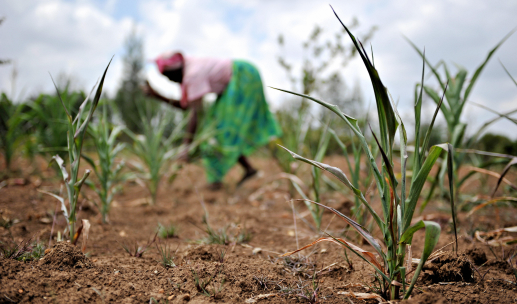
Food is fundamental in every society. In America, we connect the peaches of Georgia while shellfish is associated with New England; we go to Napa for wine tasting, and we sing songs about the Amber waves of grain that run through the heartlands. In a couple of years, rising sea levels and changing temperatures could alter how we harvest our food. We already see changes. The fruit trees struggle to blossom after warm winters; the heat of their cultivated bogs has been burning cranberries for centuries. In Asia, the rice crop is getting flooded by saltwater.
As the ocean gets warmer and more acidic, the sea life we rely on could be moving to new waters or being destroyed. In many instances, these changes, those foods that are an integral part of the region’s identity, such as the maple syrup of Vermont or coffee from Colombia will be forced to leave when the climate that they prefer shifts typically to the north.
“Napa Valley will end with Canada in a few years from today,” says Lisa Goddard, director of Columbia University’s International Research Institute for Climate and Society. It’s not just about specialized food items. Rising temperatures make it more difficult to grow important grains throughout the world, cut yields and destroy crops during dry periods, and make these staple cereals less nutritious. In advanced countries such as those in the U.S., we likely will not stop eating the same amount of grain or wheat.
Still, we’ll continue to cultivate more areas, increasing the already massive environmental impact of the agricultural industry. “The need for food products is overwhelming that it’s the most important item that people must purchase. They’ll come up with a method to purchase the food they need,” says Keith Wiebe of the International Food Policy Research Institute. However, it also means that the prices will rise, devastating to countries that already face widespread hunger.
“For people living in less developed countries who consume half of their spending on food and the other half are just for basic food items such as the cassava meal, or maize meal any small variation in one of those can have a significant effect,” says Wiebe. “They’re already struggling to survive and trading off between school books and food and health medical care.” The trick is to learn ways to change.
Researchers are breeding climate-resistant plants -developing DNA libraries, reviving wild varieties and making efforts to help farmers protect themselves financially against the changing season of growth. “It’s an uphill battle between the speed of technology and the impact of climate change,” Wiebe says. Wiebe. “The entire agricultural history is based on experiences with moderately steady temperatures. We’ll be moving over that in the coming years.” Here are 5 food items that range from regionally-favorite favorites to staple foods, which are impacted by climate change on their cultivation practices and quality and longevity.
1. Wheat.
Accounts for 20 percent of the calories consumed by the population, and 100 percent of comfort foods wheat are under threat due to drought and rising carbon dioxide levels. Researchers predict that even if we stop the global temperature from rising by 2 C, the areas of wheat production suffering from droughts will increase by 2 percent within the next 20-50 years.
The rising CO2 levels could offset some of this through a boost in photosynthesis and thus growing yield. Still, a recent study suggests that increasing CO2 could also deplete substantial amounts of nutrients from wheat and other plants such as potatoes, barley, and rice.
2. Sardines.
Small, open-water fish such as herring, sardines, and anchovies are amongst the most “climate climate-friendly” fish that can be caught and require the most fuel for boats to catch. However, rising temperatures in the ocean are fatal to sardine larvae. The species relies on plankton to feed, which is getting scarcer in certain regions around the globe due to the changing wind patterns.
Over a decade, an 87 percent decline in sardine fisheries in the Southern Caribbean is attributed mostly to climate change, while overfishing is also a factor. However, research suggests that sardine populations within the Pacific Ocean will travel north towards cooler waters in the coming 60 years, which will reduce the number of fish in the current California port fishing by 20-50 percent.
3. Almonds.
California produces around 80 percent of the world’s almonds. “That crop requires a shockingly huge amount of water to grow,” says Goddard. “As California is facing problems with water, it is likely to become a major issue.” Alongside the rain, California farmers rely on snowmelt from the Sierra Nevada mountains flowing into the irrigation canals of the state.
As the snow melts less and melts earlier due to climate change, thirsty crops such as almonds will be the most affected by the water shortage. Researchers are studying the possibility that the almond industry may move north to Oregon and Washington and, by 2050, could be warm enough to allow the crop to thrive.
4. Chickpeas.
In the year 10,000, when we first introduced chickpeas to the world, we began domesticating them. This helped make the legume into the food we enjoy nowadays the principal protein source for about 20% of the world it is also one of the best midnight snacks to crave. However, it has also stripped the plant from its diversity genetically, making it difficult to adjust to changes in climate.
It is particularly susceptible to droughts, which can ruin half of the crop, and diseases that could wreck a crop. To ensure that chickpeas are healthy, researchers have taken samples of the seeds and DNA samples from wild chickpeas that are more robust than the domesticated counterparts from Turkey and Kurdistan in the hope of breeding with a resistant plant to extreme heat, drought, and pests.
5.Wine.
The canary in the mining of agricultural coal Wine grapes require particular climates to produce wines with acidity, sugar, and tannins balanced perfectly. The grapes are already being planted in previously too cold areas for their crops and are seeking higher elevations to achieve more stable temperatures. Droughts, floods, hail, fires, and unpredictable freezes and rains could decimate yields.
In 2020, the destruction of smoke from California’s most destructive wildfire season had destroyed 13.3% of the state’s grape harvest. A recent study suggested that the global temperature rises by 2 C, and appropriate wine-growing regions could shrink by 56 % by the century. Diversifying varieties could mitigate some of this loss. Still, it could result in the end of generations of cultivating certain grapes in specific areas favoring varieties more suited to climate changes.







